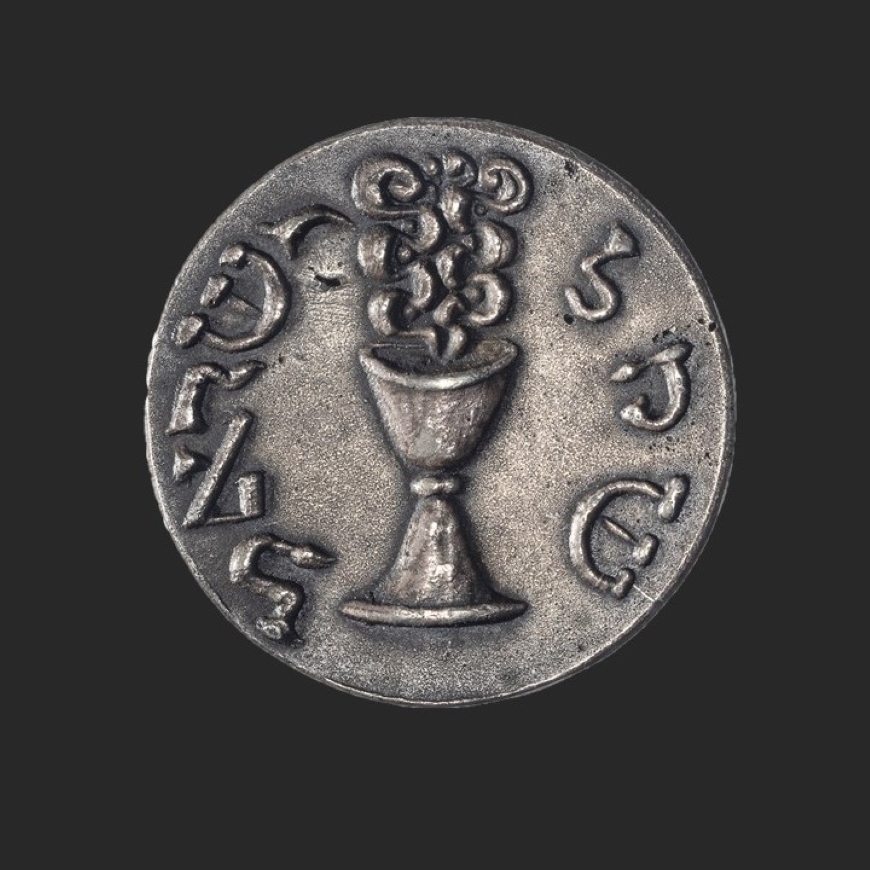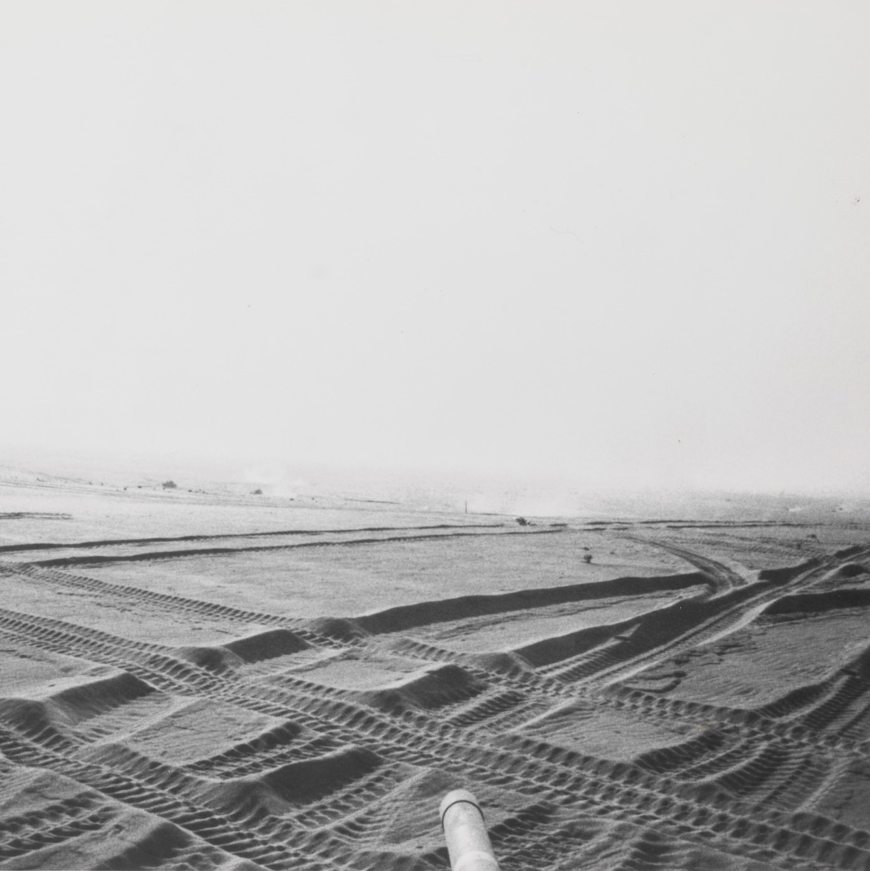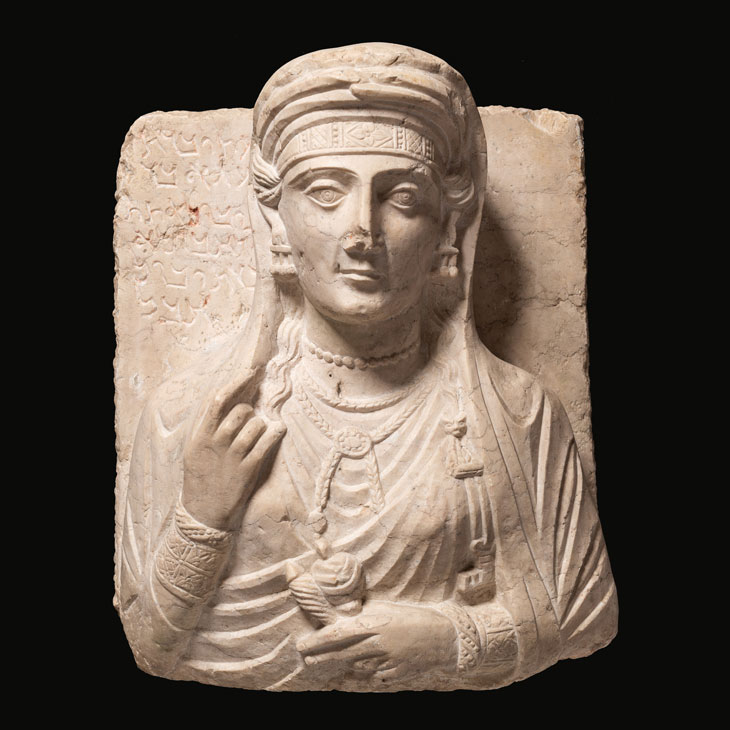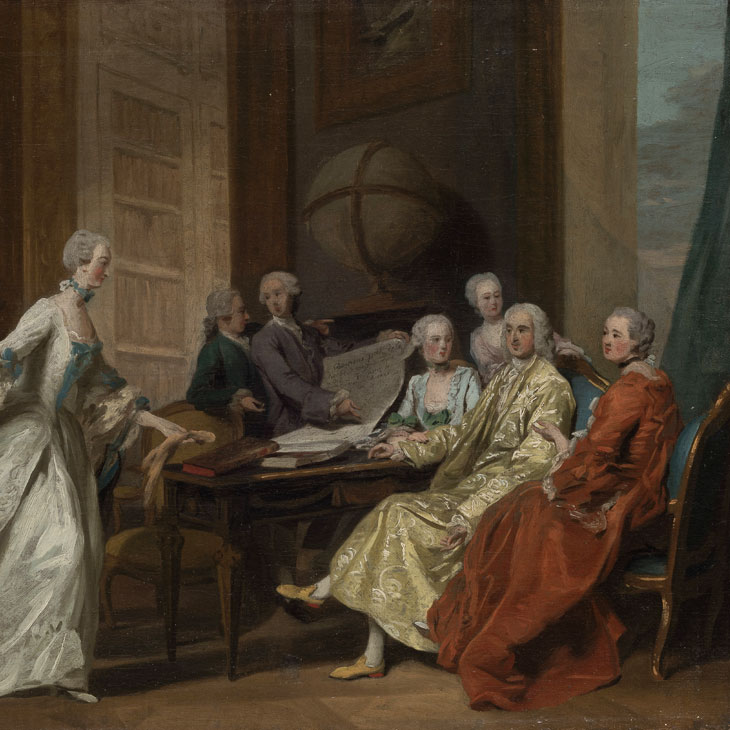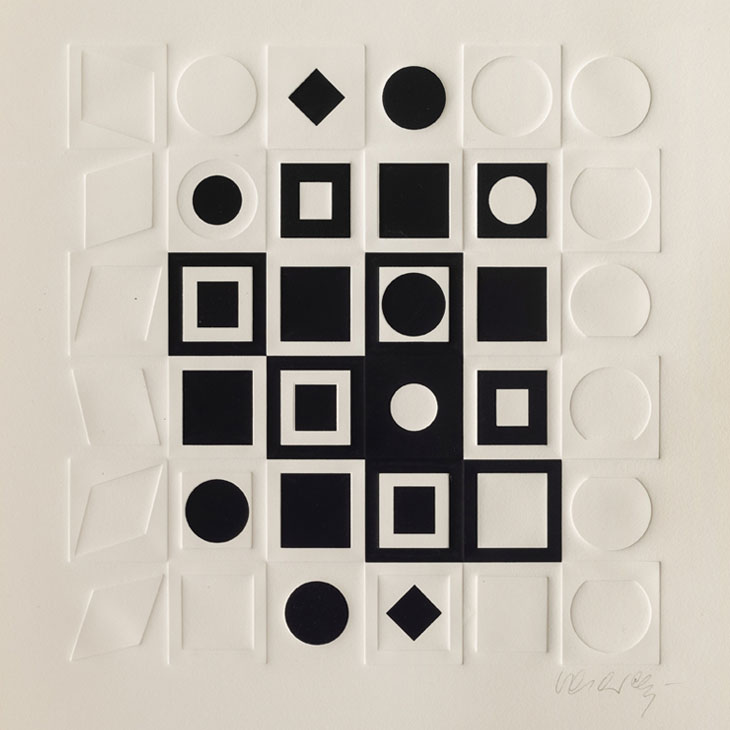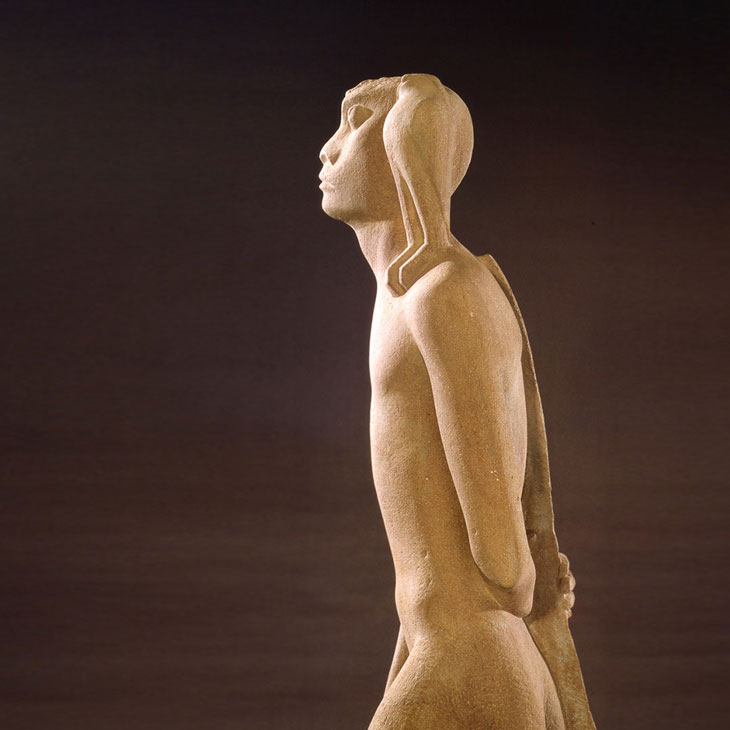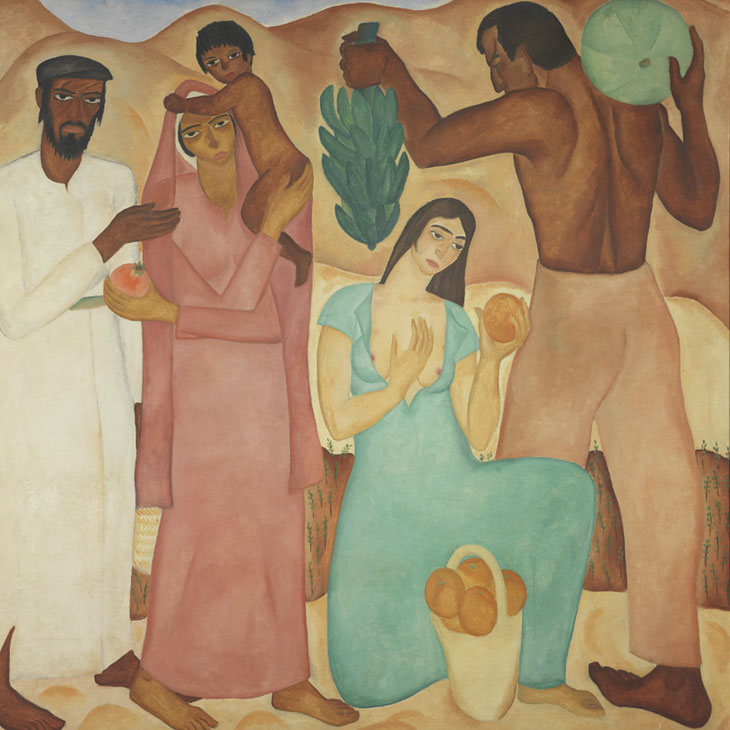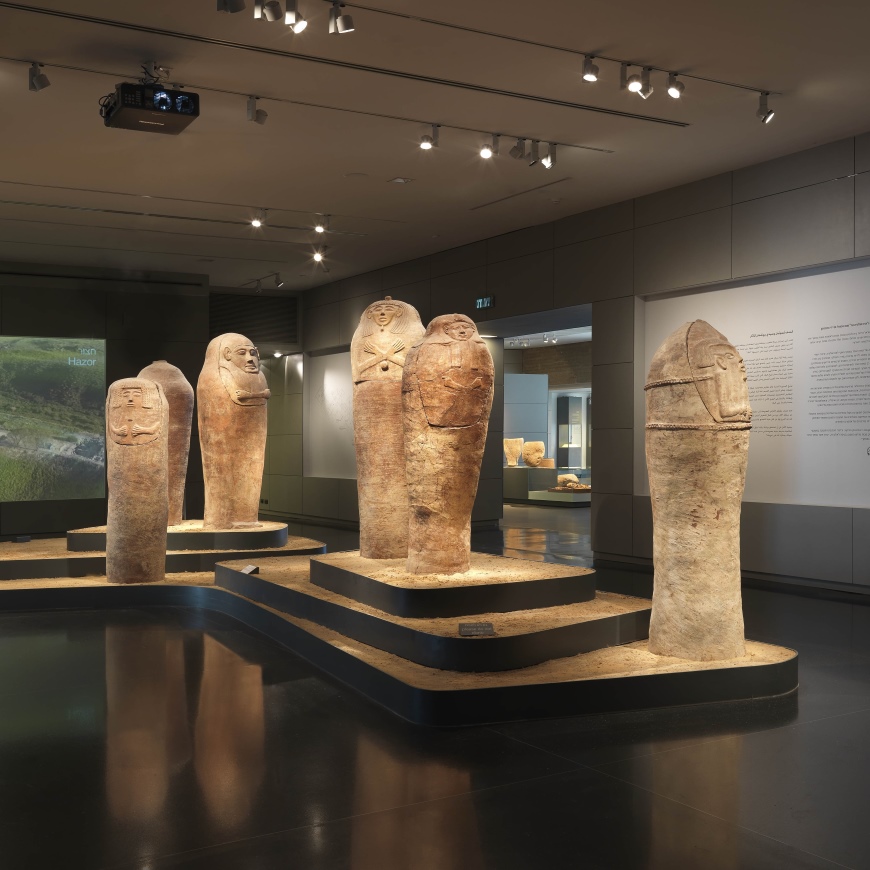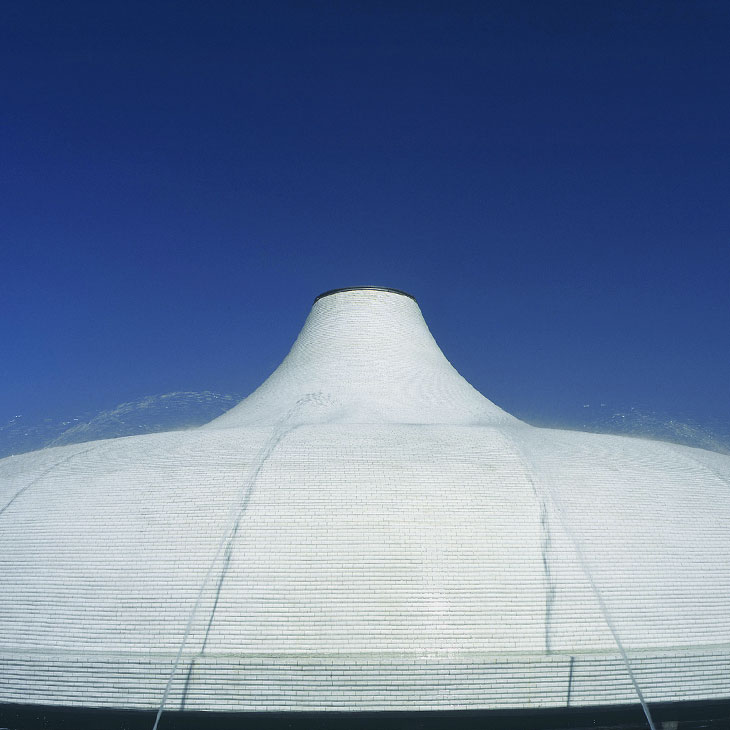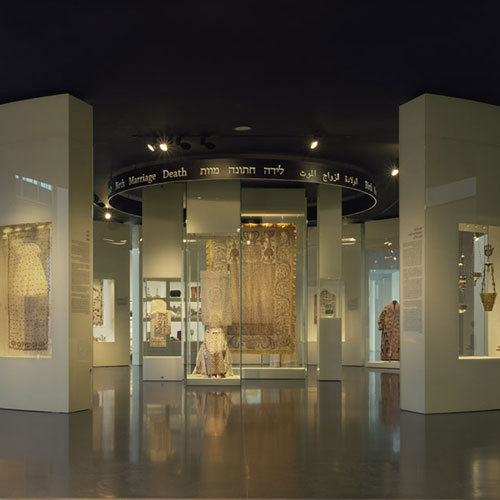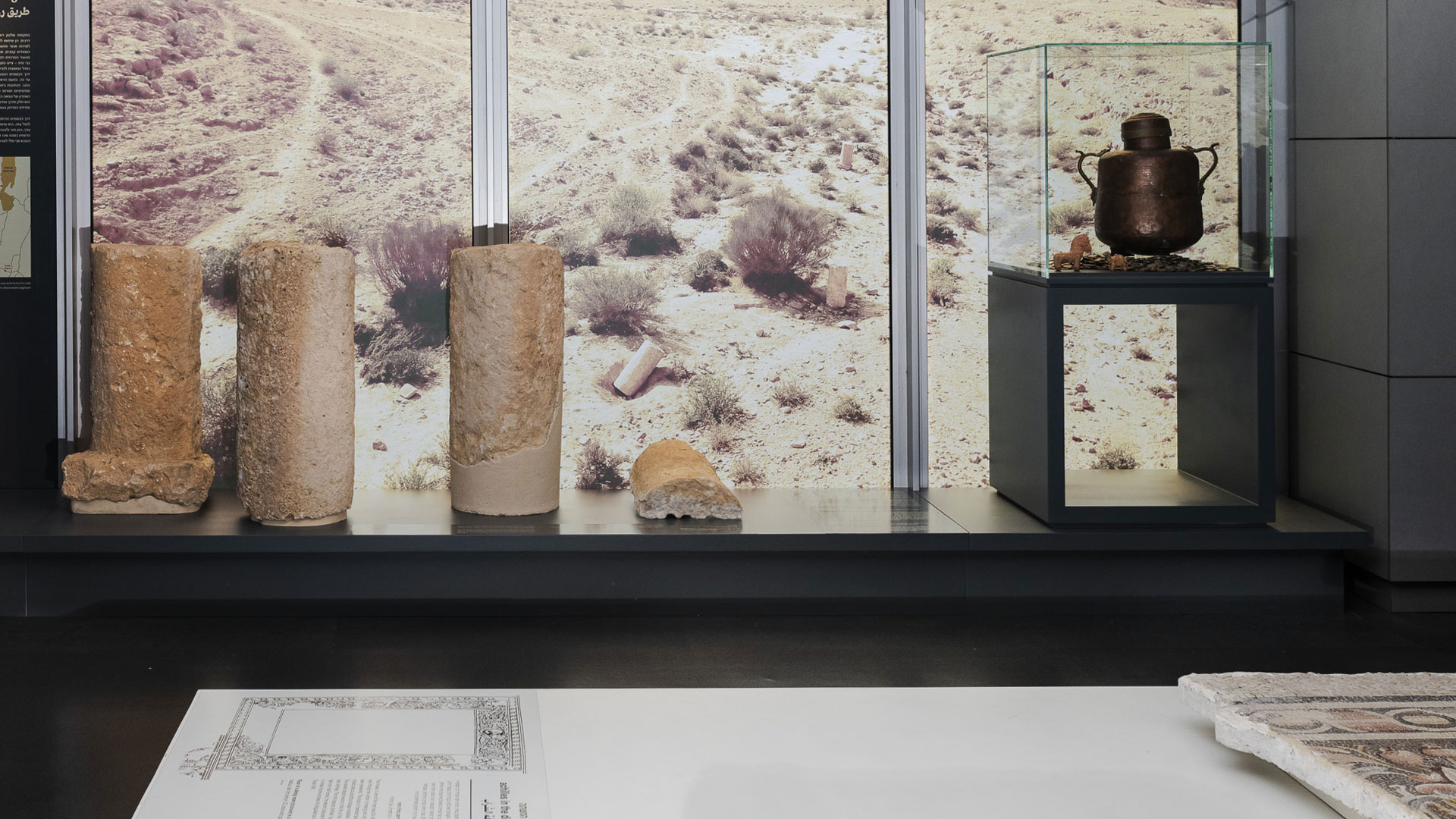
Special Display: A New Roman Road in the Negev
-
August 1 2022
Curators: Dudi Mevorah and Rachel Caine Kreinin
Designers: Kamea Devons and Michal Aldor
-
Roman Gallery, Bronfman Archaeology Wing
Dozens of roads running the length and breadth of the land were built during the period of Roman rule. They were used for moving Roman military troops, for transporting mail and goods, by the local administration, and by the general public. The roads were marked by milestones shaped like small columns, which were erected along the roads at regular distances and were used to indicate the distance from the nearest major city. The inscriptions on them – engraved in stone or painted on plaster – included, in addition to distances, the names of those who ruled at the time the stones were erected.
The milestones exhibited here were discovered in 2018 in the course of a survey of the Nabatean Spice Route. The study revealed a previously unknown seven-kilometer segment of the route, as well as the first decipherable Spice Route milestone inscriptions from the Negev. The bilingual Greek and Latin inscriptions mention the Roman emperors Pertinax and Septimius Severus, as well as the governors of the province of Arabia at the time – indicating that the stones were erected during the last decade of the 2nd century CE.
The new segment of road that was discovered, from Mezad Mahmal to Mezad Grafon, is part of the route that connected Mitzpe Ramon to Oboda, where the Roman army had built its camp. The distances recorded refer to the distance from Elusa, the main Negev city.
The historic Spice Route covered a distance of more than 2,000 kilometers from southern Yemen to the port of Gaza. It was used by the Nabateans for transporting expensive spices and perfumes, such as frankincense and myrrh, from Arabia to the Mediterranean Sea. When the Nabatean Kingdom was annexed to the Roman Empire in 106 CE, the Roman army constructed new roads along its course for its own purposes, including the recently discovered segment.
- Apr 19Apr 20Apr 27May 03May 04May 07May 10May 11May 17May 18May 21May 24May 25May 28May 31
- Apr 01Apr 08Apr 15Apr 29
- Apr 02Apr 02Apr 02Apr 09Apr 09Apr 09Apr 16Apr 16Apr 16Apr 30Apr 30Apr 30
- Apr 02Apr 09Apr 16Apr 30
- Apr 16Apr 18Apr 30May 02May 09May 16May 23May 30
- Apr 18May 02May 06May 09May 16May 20May 23May 27May 30
- Apr 18May 02May 09May 16May 23May 30
- Apr 18May 02May 09May 16May 23May 30
- Apr 18May 02May 09May 16May 23May 30
- May 02May 06May 09May 16May 20May 23May 27May 30
- May 06May 20May 27
- May 07Jun 25


